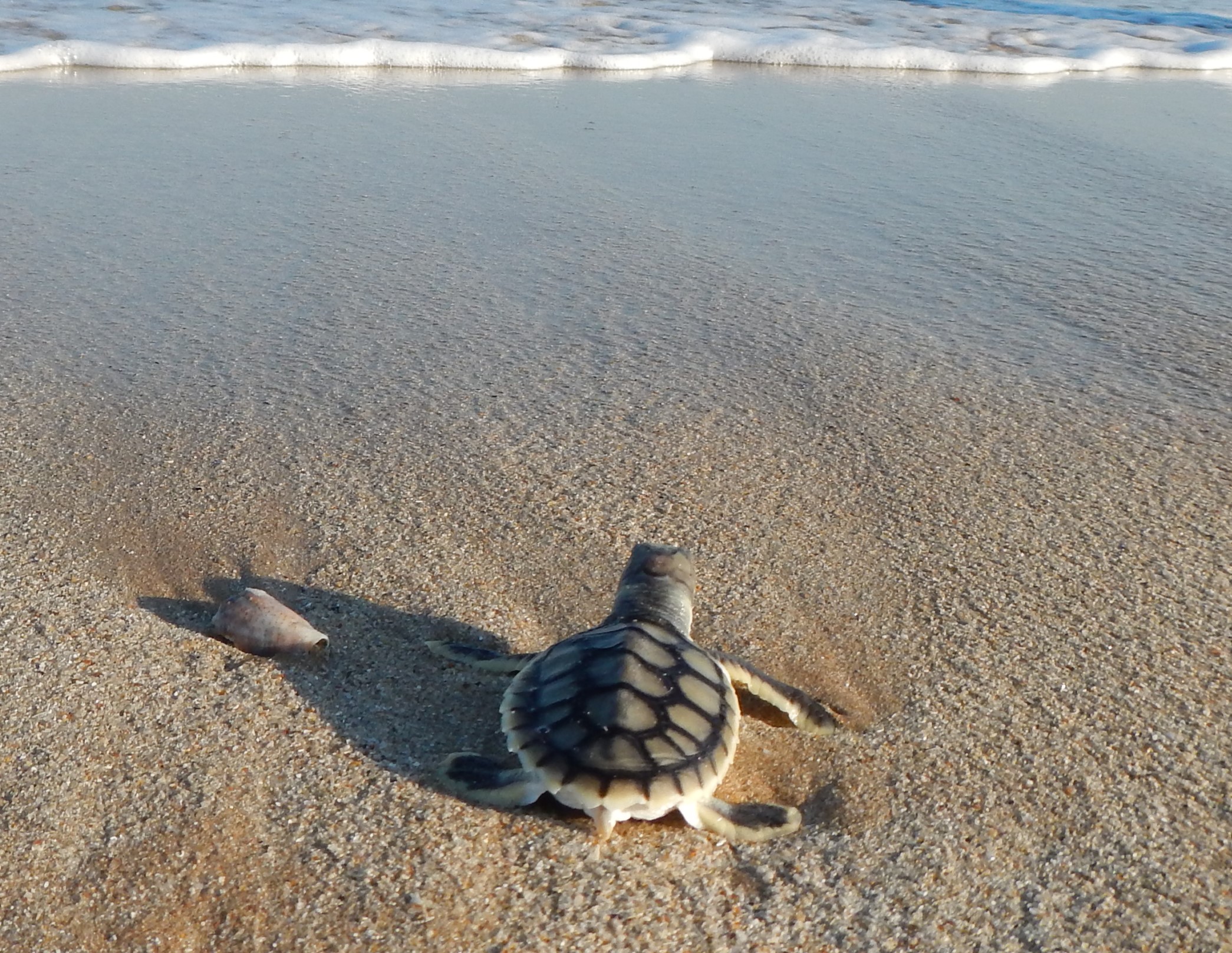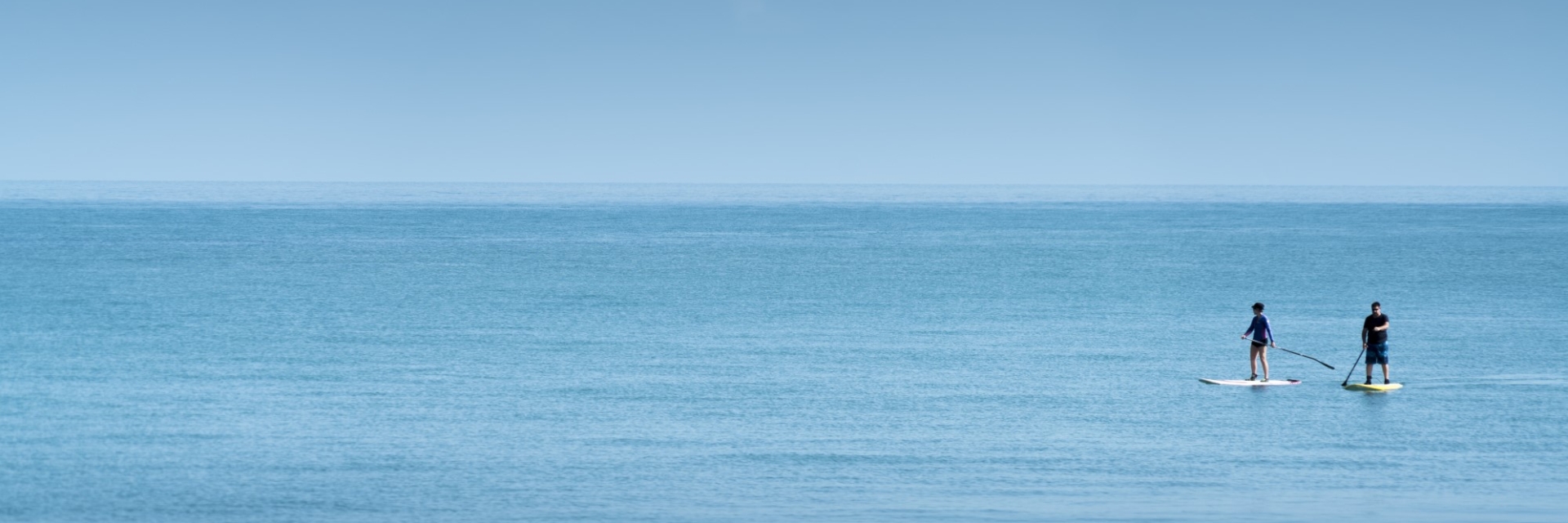Looping Manta Rays
Casuarina Coast Reserve stretches over 8 kilometres between Rapid Creek in the south and Buffalo Creek to the north. At around 1350 hectares, the Reserve is a fascinating mix of sandy beaches, low cliffs and coastal forest. This land is important to the Larrakia people and just off shore is a shallow rock formation that can be seen at low tide. Dariba Nungalinya or Old Man Rock is sacred to the Larrakia people and part of their story. The Larrakia maintain cultural links to the lands around Darwin and food is still collected along these shores. 
The wide sandy beach is an important ecological area and home to nesting turtles. Female turtles return to their place of birth after many years at sea. Laying females will return to the beach several times over the season to lay up to 50 eggs each time in a special egg chamber. Northern Territory Parks and Wildlife provide talks on site during laying season. You might even get to hug a baby turtle.
The long expanse of sand is also a very popular dog walking area particularly in the evening as the sun sets over the harbour. This is a time when the low rocky cliffs glow with vibrant colour and the cool sea breeze washes over the sand. Keep an eye out for dugong, manta ray or dolphin that feed within the shallows. Manta ray can be seen performing loops as they hunt for prey. Their long wings breaking the surface often appearing as two fins side by side giving the appearance of two dolphins swimming together. Nestled in the dunes nearby is the Darwin Surf Life Saving Club that enjoys uninterrupted views out over the Timor Sea.
Fringing the sandy shore are wispy Casuarina trees. Loved by the black cockatoos these trees produce abundant seed pods that attract large groups of the noisy birds. Further back behind the Casuarina trees there is a mix of woodlands, monsoon forest and paperbarks. This area is popular with off-road cyclist and walkers that enjoy the bush tracks. The paths wind their way through the Reserve towards Buffalo Creek. 
The beach near Buffalo Creek is a very important resting area for migrating birds. These birds travel thousands of kilometres from as far away as Alaska on annual migrations toward Australia and New Zealand. Tens of thousands of birds can be seen at the shore twisting and twirling in concert, glowing gold in the final rays of sunlight.
